
All categories
Featured selections
Trade Assurance
Buyer Central
Help Center
Get the app
Become a supplier

(338 products available)


































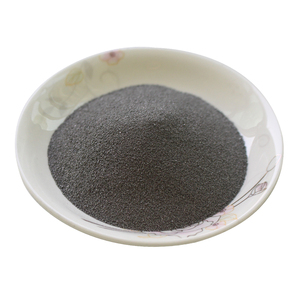
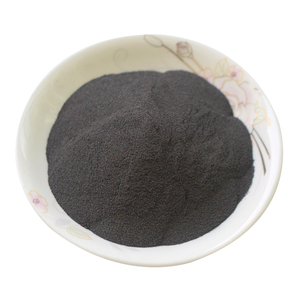
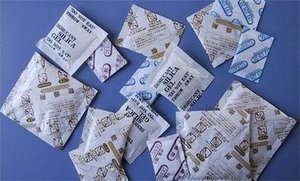
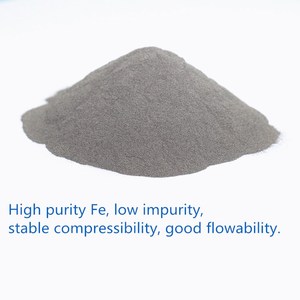
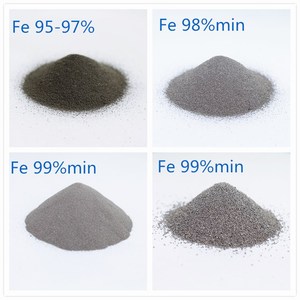
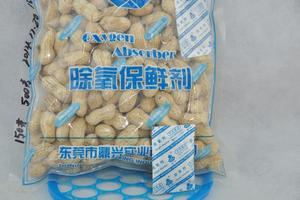






Market Overview: The global oxygen scavenger market, particularly with a focus on products from China, has experienced robust growth. According to Research and Markets, the automobile oxygen sensor segment, which closely relates to the functionality of oxygen scavengers, is expected to grow from $6.59 billion in 2024 to approximately $8.39 billion by 2028, achieving a compound annual growth rate (CAGR) of 6.2%. This growth is primarily driven by the increasing demand for advanced emission control systems and the rising production of fuel-efficient vehicles. Notably, the automotive industry has seen a significant production increase, with about 85.4 million vehicles manufactured globally in 2022, reflecting a 5.7% rise from the previous year. This surge in vehicle production is expected to further bolster the need for efficient oxygen scavenging solutions, as manufacturers focus on optimizing engine performance and adhering to stringent emission regulations.
Industry Insights: The market for oxygen scavengers from China is influenced by several key factors, including technological advancements and shifts in consumer behavior towards sustainability. As companies adopt more eco-friendly practices, the demand for oxygen scavengers, which are critical in maintaining product freshness and extending shelf life, is anticipated to increase. Furthermore, the Asia-Pacific region, including China, is projected to be the fastest-growing area for these products, fueled by expanding industrial activities and rising awareness of environmental concerns. Major players in this space are continually innovating, with a focus on developing products that meet the evolving needs of consumers and industries alike. The increasing integration of advanced diagnostic systems and lightweight materials in manufacturing processes also presents opportunities for growth in niche markets where oxygen scavengers play a vital role in product preservation.
Oxygen scavenger packets are available in several advanced and basic types. They include:
These kinds of oxygen scavenger packets contain metals like titanium and copper as the primary oxygen-absorbing elements. They are mainly used in food packaging, pharmaceuticals, and electronics. In these applications, stable and controlled removal of oxygen is needed. The fairness of metal-based scavengers is that they tend to be more effective where larger quantities and higher concentrations are required.
These scavengers use chemical reactions to consume oxygen. Common reactants include ascorbic acid and sodium bisulfite. They are popular in food and beverage industries due to their ability to inhibit oxidation. This helps in extending product shelf life. They are also easily incorporated into formulations and thus do not affect product taste or texture. This makes them great for preserving foods and drinks.
These scavengers incorporate hygroscopic elements. Such elements include sea salt or sugars that require moisture to activate. They deal with moisture and oxygen simultaneously. This is especially useful in packaging for products sensitive to both elements. The scavengers are often used in regions with high humidity. This is because moisture levels are higher than in other parts of the world.
Organic polymers contain elements like nitrogen or carbon within their structures. These elements bind oxygen through physical adsorption or chemical interactions. Organic polymer-based scavengers are commonly used in industries such as pharmaceuticals and electronics. In these industries, high purity and product integrity are necessary for low and medium oxygen levels. This makes them a good fit for that.
Oxygen scavenger preservatives are usually paired with corrosion inhibitors. These are applied in metal packaging, shipping containers, and industrial equipment maintenance, to inhibit rust and corrosion on exposed metal surfaces. They are also effective in preventing damage during storage and transportation when oxygen is reactive. Common scavenger examples include sodium sulfite and hypophosphorous acid.
Oxygen absorber sache packets
have diverse applications in many industries. Chinese manufacturers produce most of them because of their cost efficiency. Some of these applications include:One of the main uses of oxygen scavenger is in food packaging. They help extend the shelf life of perishable goods by removing oxygen from the packaging atmosphere. Oxygen creates an ideal environment for bacteria and mold. These microorganisms thrive on oxygen and spoil food quickly. By using scavengers, food manufacturers keep these entities at bay, preserve the quality, and enhance the safety of the food.
Oxygen scavengers are used in the storage and packaging of oxygen-sensitive drugs and biological products. These include vaccines and enzymes in order to prevent oxidation. This ensures that the drugs maintain efficacy, and stability, and enhances the preservation of sensitive biological products. This leads to enhanced patient health and decreased waste. This makes oxygen scavengers vital in medicine and drug management.
Electronics components and materials such as semiconductors are sensitive to moisture and oxygen. These two can cause contamination and oxidation. Oxygen scavenger pouches are used during the manufacturing process and in packaging to maintain an inert atmosphere. This protects the components from damage. This contributes to better performance and reliability of end products as well as a lower rate of product failure.
Oxygen scavengers are used in the construction industry with tools like welding and metal cutting. They help prevent corrosion of steel and other metals during storage and in environments where humidity and oxygen levels can cause rusting. With scavengers, the integrity and durability of metal components are maintained. This leads to reduced maintenance costs for infrastructure.
In transportation, oxygen scavengers are incorporated into shipping containers and bulk transport vehicles to prevent spoilage of perishable goods and damage to metals. They help reduce the risk of spoilage, corrosion, and oxidation-related damage. This ensures that products such as fruits, vegetables, meat, and fish reach consumers in good condition. Oxygen scavengers are therefore essential for effective management in transit and during storage.
Composition
Oxygen scavenger packs consist of iron powder, activated carbon, and water-absorbing salt. Some also contain proprietary alloys or polymer materials. Each of these elements has a specific function. While iron reacts with oxygen and binds it, activated carbon absorbs moisture and helps keep the packaging dry. Absorbing moisture helps in activating the iron to enhance its efficacy in scavenging oxygen. Polymers and salts are included to improve the structure of the scavenger and boost its efficiency.
Versatility
Oxygen scavengers are quite versatile and applicable in various industries. From food packaging and electronics to pharmaceuticals and shipping. Each industry utilizes these scavengers to prevent spoilage, corrosion, and oxidation. This makes them useful in a multitude of product applications and providing customized solutions based on specific oxygen sensitivity requirements.
Space Efficiency
Oxygen scavengers are designed to be space efficient. This makes them easy to integrate even in the tiniest packaging without adding any bulkiness. Regardless of their compact size, these scavengers effectively absorb oxygen. They keep products secure and protected.
Ease of Use
Most oxygen scavengers are simple to incorporate. This makes them very convenient in various settings. They can be easily added to existing packaging without requiring complex handling. Most are disposable upon completing their oxygen absorption task and leaving the product safe and ready for use.
Food Preservation
An oxygen absorber for food is used in food preservation by incorporating them into vacuum-sealed or modified atmosphere packaging. They are placed inside the packaging along with the food to absorb any residual oxygen. This prevents spoilage, paves the way for an extended shelf life, and maintains the nutritional value and flavor.
Pharmaceutical Packaging
In the pharmaceutical industry, oxygen scavengers are integrated into packaging for sensitive drugs and biological products. These products are prone to oxidation. The scavengers work by trapping the oxygen within the packaging to preserve the efficacy and stability of the drugs. This ensures that all the medicines remain effective and safe for users.
Electronics Protection
Oxygen scavengers help protect electronics and semiconductor products during manufacturing and in packaging. Here, they prevent oxidation by maintaining an inert atmosphere around the components. This contributes to the overall performance, reliability, and longevity of the electronic devices. It also prevents contamination and ensures high-quality retention and product integrity.
Shipping and Transportation
Oxygen scavengers are utilized in bulk transport containers and vehicles. They mitigate spoilage and ensure oxygen-sensitive goods remain fresh. Whether food products, chemicals, or other perishables, scavengers work to maintain product quality and safety during transit. This enhances efficiency in the supply chain.
Routine Checks
Regularly check the oxygen scavenger packs to ensure they are not damaged and there are no leaks in the seal. Doing so will keep the scavenger fully protected from contamination by oxygen.
Proper Storage
Maintain proper storage conditions for the scavenger packets. Avoid exposure to direct sunlight, heat, and extreme humidity. These conditions can have adverse effects on their efficiency and effectiveness.
Follow Instructions
Follow the manufacturer's instructions regarding the installation and usage of oxygen scavengers. Do not exceed the recommended oxygen levels and stay within the advised temperature ranges to retain optimal performance.
Immediate Replacement
It is important to replace any oxygen scavengers that are consumed or damaged immediately. Using depleted scavengers will expose the products to oxygen and thus risk spoilage or damage.
Scavengers
Oxygen scavengers in foods and drugs work by binding the free oxygen that is present within the packaging. This helps eliminate the chances of spoilage and maintains the general stability of the product.
Use with Care
Although most oxygen scavengers are safe, selecting those that meet all food-grade and pharmaceutical standards is crucial when applying them to these sensitive items. Always be keen on product specifications and datasheets to avoid using scavengers that contain prohibited or restricted elements.
All oxygen scavengers have to be housed in packets and sachets that bring about complete sealing. Any leaks or compromised integrity in the packets can lead to oxygen being able to access the scavenging element and reacting with it instead of the product.
When handling scavengers like oxygen absorber sachets with corrosion inhibitors, ensure that there is no cross-contamination with food or other products that are meant for consumption. These inhibitors are usually safe, but some may contain chemicals that are restricted for consumption.
Many oxygen scavengers contain iron or other metals that could potentially release minor amounts of chemical contaminants. This becomes more of a concern when used in large industrial applications. Therefore, always ensure proper disposal. Follow guidelines on local hazardous waste management and recycling.
Regularly monitor products packaged with oxygen scavengers during their shelf life or storage duration. Check for any signs of swelling, bulging, or changes in product appearance. These are all signs that the scavenger may not be working effectively. In such scenarios, it is advised to switch to a stronger oxygen scavenger.
A1. Yes, oxygen scavengers help food manufacturers reduce oxidation effects, mold, and spoilage to extend food shelf life.
A2. China manufacturers produce moisture and air oxygen scavenger packets and sachets for various uses.
A3. Yes, as long as they meet food-grade standards and are approved by regulatory bodies, they are safe.
A4. Many are manufactured using iron powder, activated carbon, and proprietary polymers to trap oxygen.
A5. They reduce oxygen levels to protect products from spoilage and degradation during transport and storage.
A6. No. Most oxygen scavenger sachets and packets are single-use and need replacement after depletion.